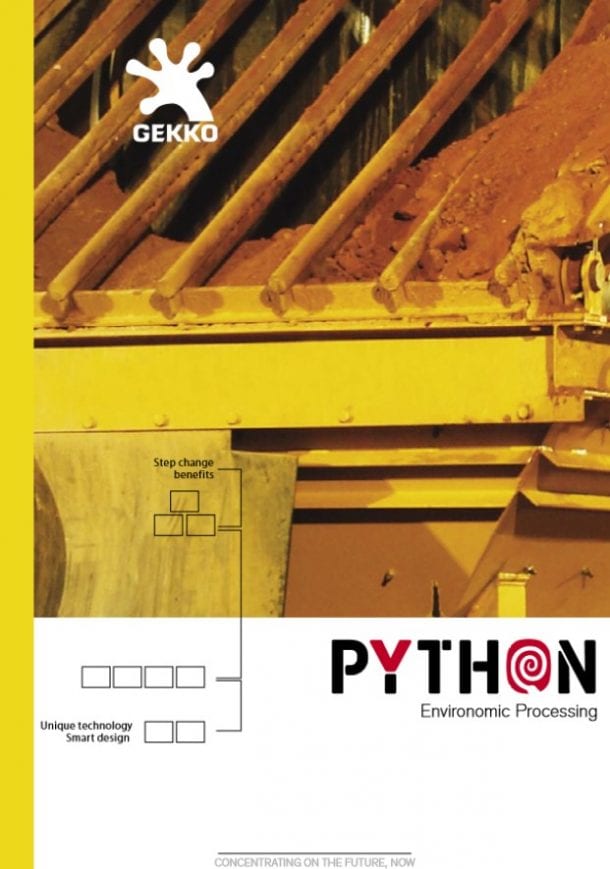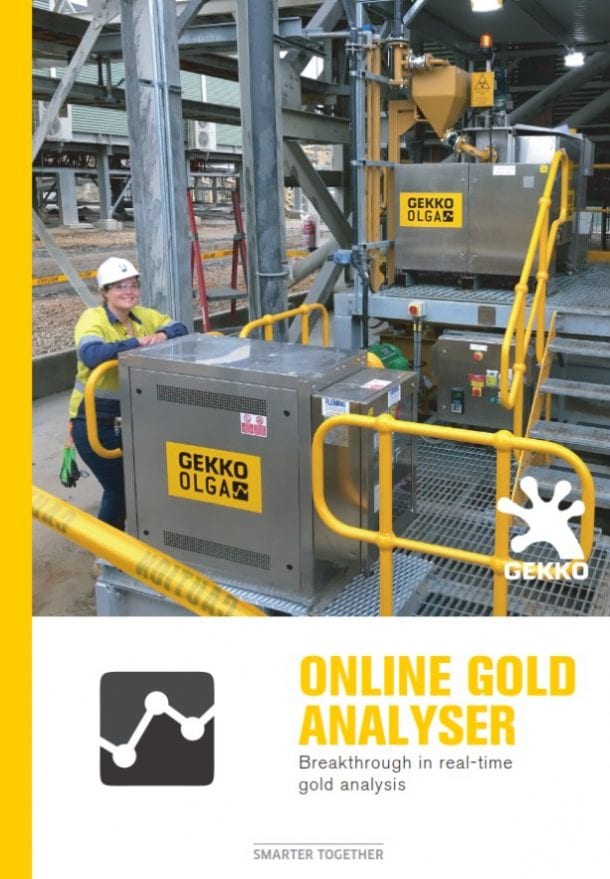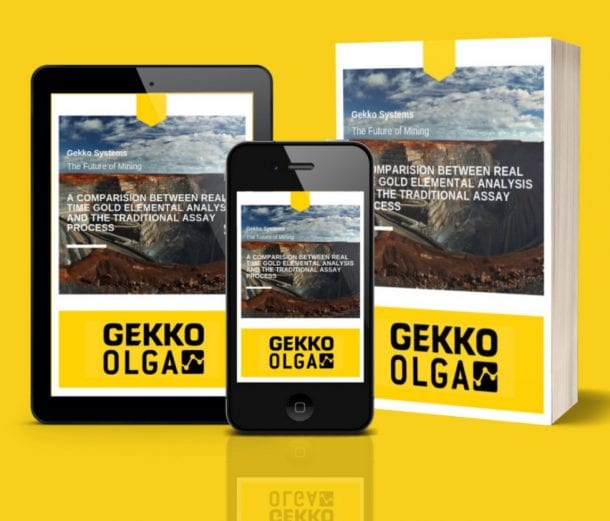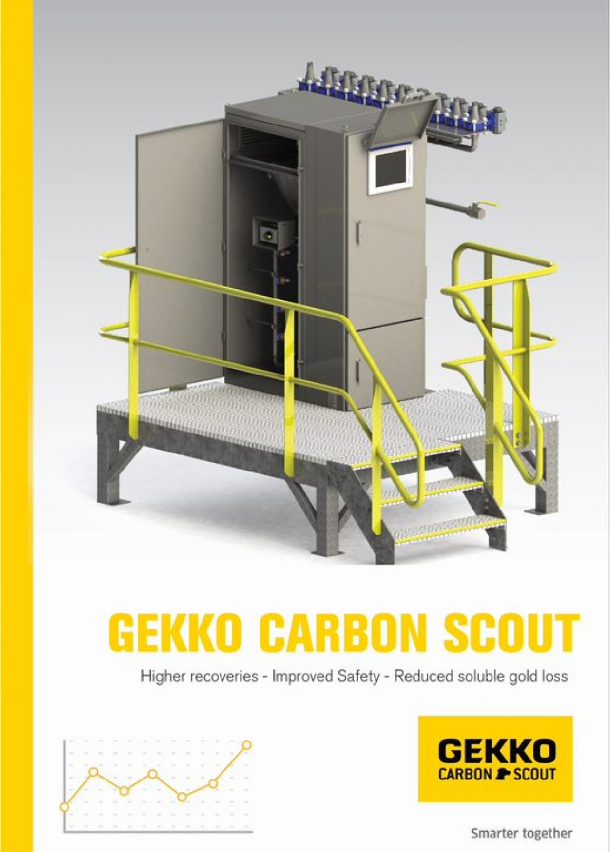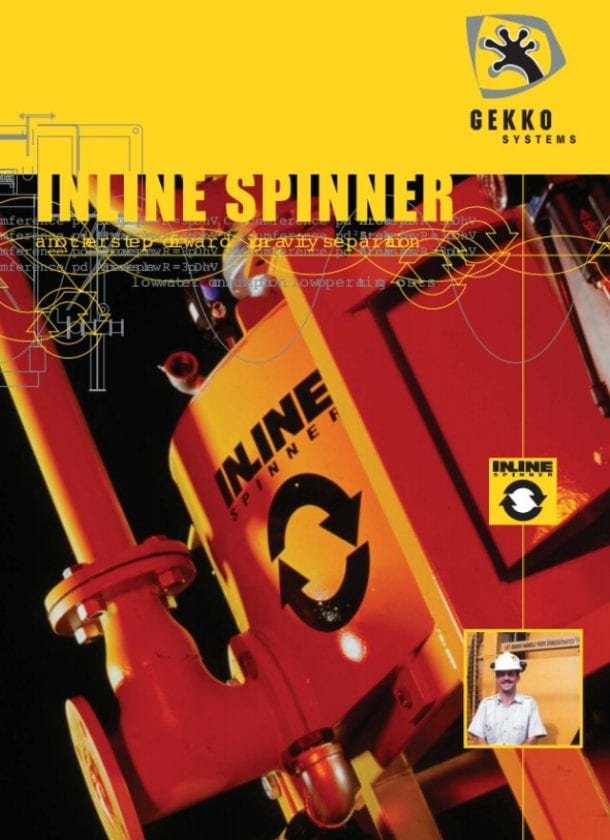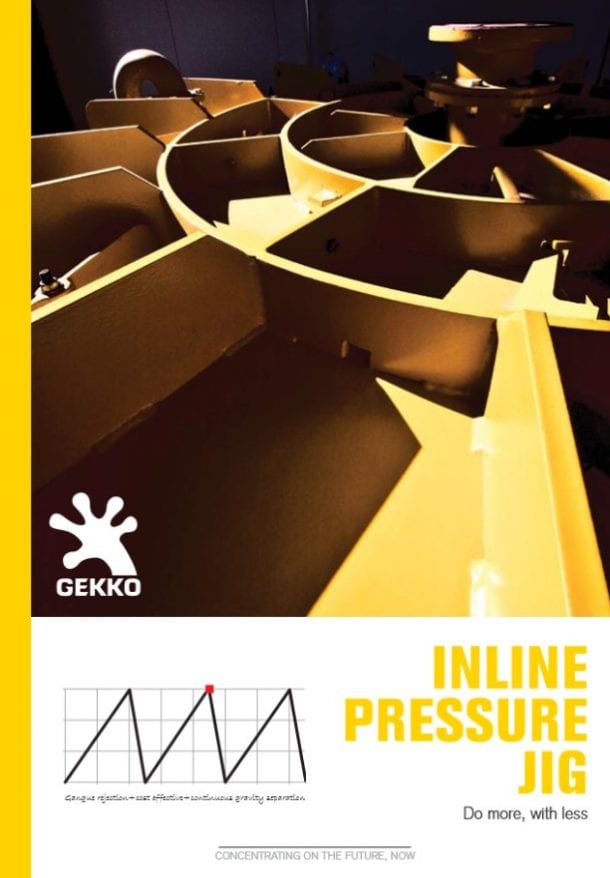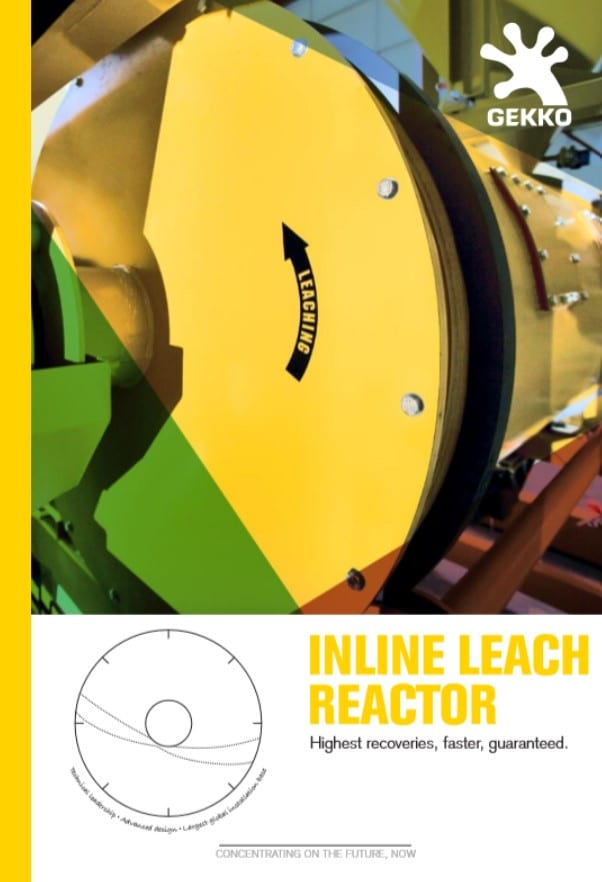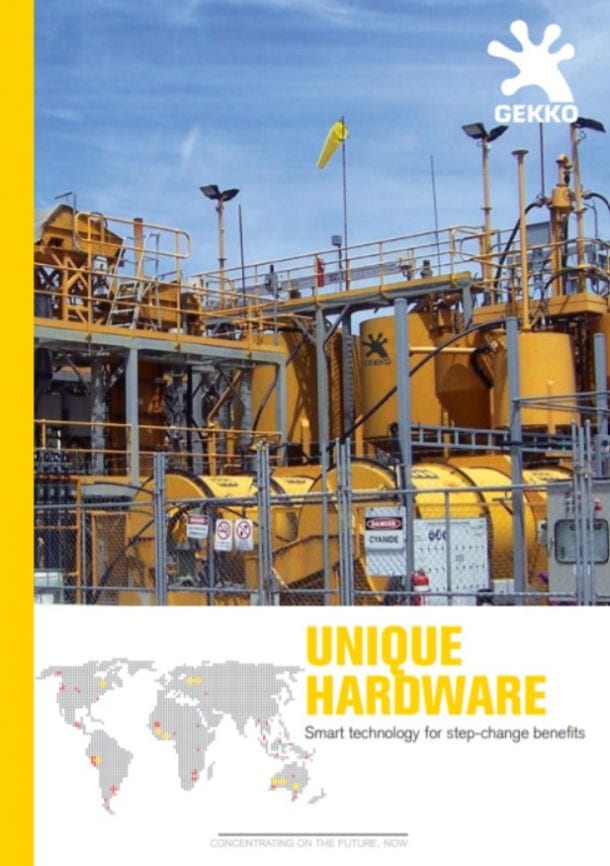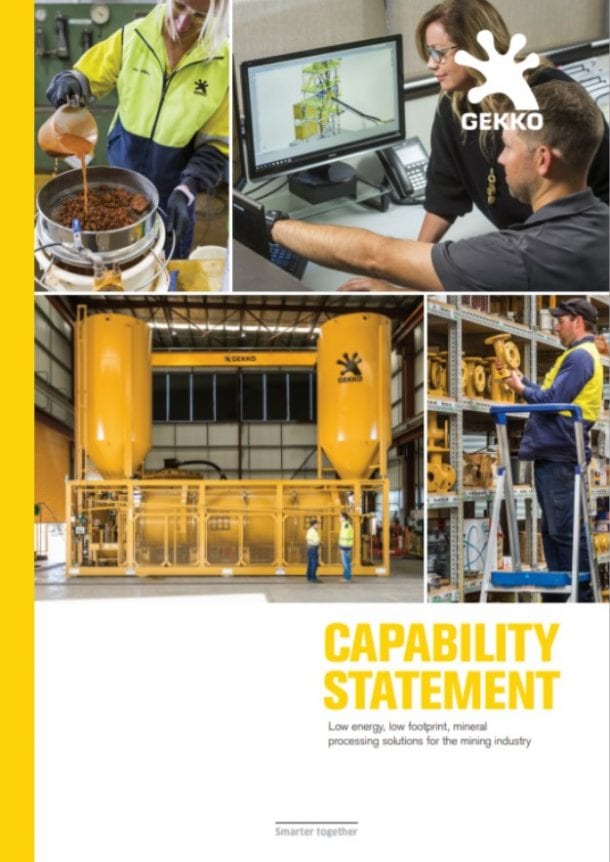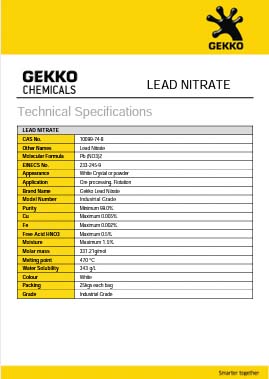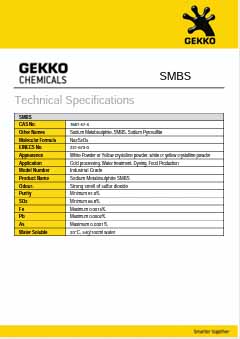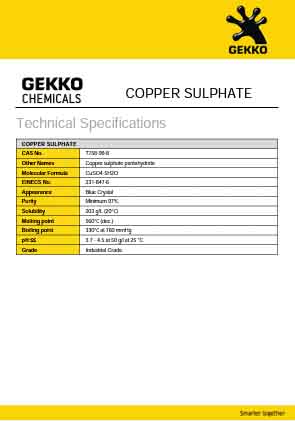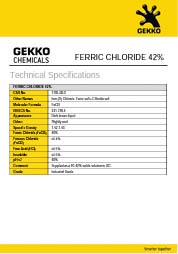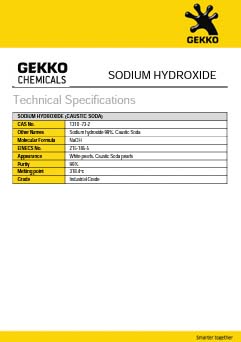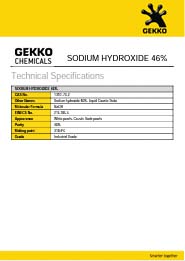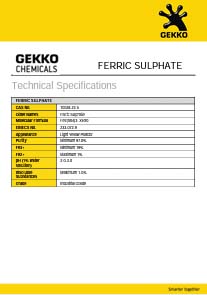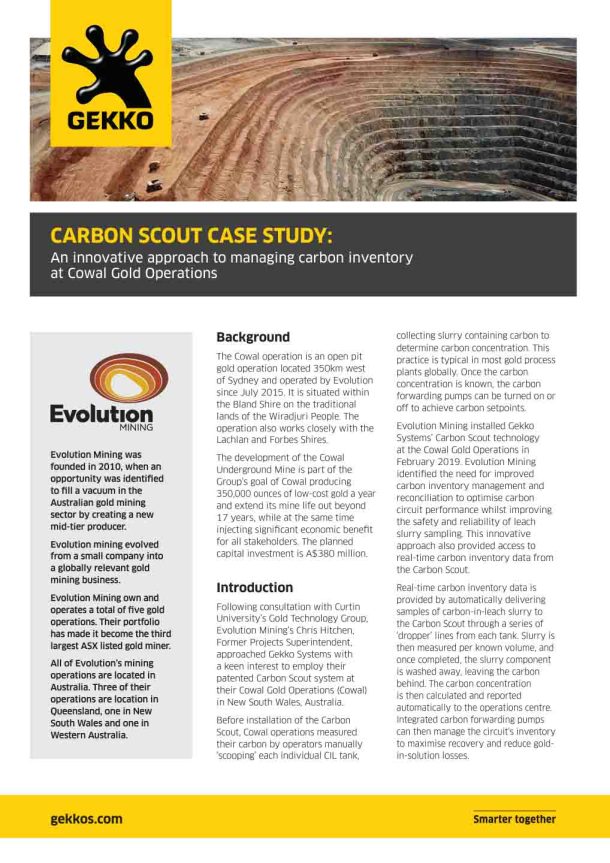Processes
Gekko Systems are leaders in the development of energy-efficient pre-concentration flowsheets that deliver step-change benefits.
Focussing on the gold industry, Gekko replace high-energy whole ore treatment of gold by carbon-in-leach (CIL) methodologies with beneficial low-energy process solutions.
Harnessing both gravity separation and floatation, as well as dramatically reducing the initial mass to be processed by pre-concentration, Gekko flowsheets increase the grade for downstream intensive processing. This innovative approach maximises the recovery of valuable minerals. It saves vast amounts of operating energy across an entire plant.
Gekko develop advanced solutions that deliver more efficient and more environmentally friendly ways of extracting valuable minerals. Gekko’s state-of-the-art flowsheets incorporate proprietary core technologies, as well as premium brand components when required, to provide tailored efficient solutions.
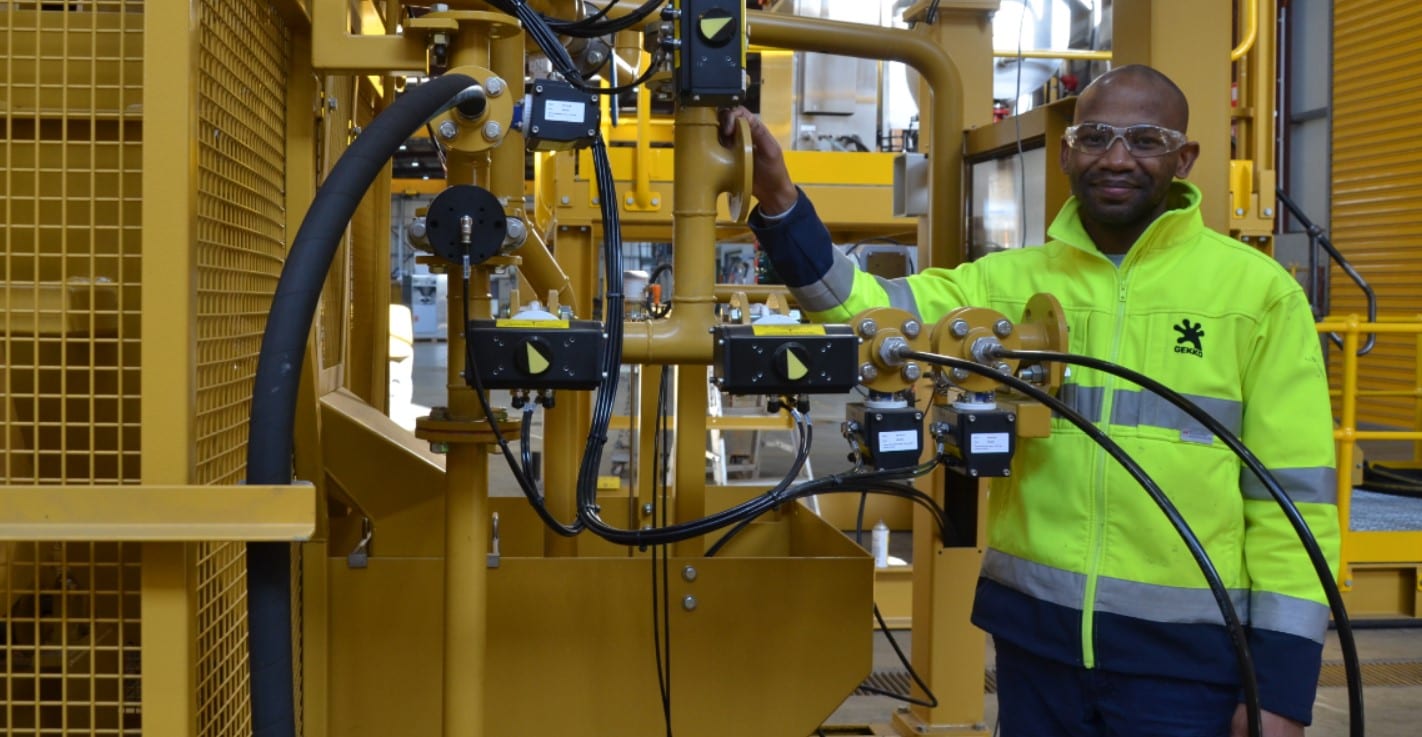
Comminution Design
 Comminution is the most energy intensive and costly component of mineral processing.
Comminution is the most energy intensive and costly component of mineral processing.
Improving how comminution, the crushing and grinding of material to a smaller size, is executed and managed is instrumental to Gekko’s global expertise in energy-efficient flowsheet design.
Gekko’s focus is to process ore that has optimal liberation through pre-concentration or gangue rejection. Therefore, employing the right device, to produce the right size ready for the next process step, is important.
How It Works
![]()
Comminution, the simple crushing and grinding of ore to reduce its size, can be performed by a series of innovative devices to provide a coarse particle size that exhibits optimal mineral liberation.
There are various types of comminution design. Advanced engineering and research have identified improved designs and devices that can lower operational costs and reduce energy consumption.
To achieve an optimal flowsheet design, each ore deposit needs to be tested, to identify its unique comminution characteristics. Then a comminution strategy can be devised to complement and maximise the overall recovery approach.
The Gekko Difference
![]()
Gekko is passionate about finding better ways to perform comminution, so much so that Gekko have established a not-for-profit educational organisation called the Coalition for Eco-Efficient Comminution (CEEC). This organisation is supported by a broad range of mining sector companies with the common goal to accelerate awareness, knowledge transfer and, as a result, improve energy and cost outcomes in the substantive area of comminution.
Historically, traditional crushers and jigs use vast amounts of energy that, over the entire mineral processing operation, are expensive and inefficient to operate.
Gekko’s core technologies, the InLine Pressure Jig and the Python processing plant play a key role in producing energy-efficient comminution flowsheets. Coarse liberation of minerals at the start of the process reduces energy input and this has flow-on effects for energy savings during downstream processing. The type of comminution device employed by a mining operation is extremely important for minimising energy costs and maximising profits.
The modular design and clever construction of the InLine Pressure Jig and Python processing plant components provide exceptional speed-to-operation for fast financial returns, as well as energy-efficient and environmentally friendly processes.
Gekko’s technical services team will perform extensive testwork on an ore body to understand its mineralogy and comminution characteristics. Then Gekko will recommend and design the optimum comminution flowsheet to deliver maximum mineral liberation. For more information, contact Gekko’s technical services team today.
Cyanide Detoxification
 Today, preserving the natural environment is of great importance. The widespread use of cyanide to leach gold from mineral deposits is a potential threat to wildlife. This is a threat the mining industry recognises and actively manages.
Today, preserving the natural environment is of great importance. The widespread use of cyanide to leach gold from mineral deposits is a potential threat to wildlife. This is a threat the mining industry recognises and actively manages.
Gekko support mining companies to optimise the cyanide detox process for the best outcomes, both ecologically and financially.
Incorporating a specifically designed detox circuit provides robust environmental and business security. Expert design and optimisation of the process conditions, based on laboratory results and on-site tests, is critical to achieve efficient cyanide detoxification.
How It Works
![]()
Gekko’s world-leading experts in cyanide detoxification are available to help establish or improve a detox circuit. Gekko provide a comprehensive consultant service that includes:
- laboratory test work and professional recommendations
- process design and engineering
- manufacturing and installation
- commissioning and staff training
- auditing, ongoing optimisation and online monitoring (if requested)
Gekko draw on the latest technologies and methods for detoxifying cyanide, including SO2/O2, H2O2 (Peroxide) and Caro’s Acid processes. They understand the benefits and pitfalls of each detox method and offer specialist advice using this knowledge.
Gekko’s knowledgeable team will gather and study mine-specific information and requirements. Ultimately, Gekko endeavour to achieve environmental obligations at the lowest total cost.
The Gekko Difference
![]()
Gekko’s laboratory testwork and optimisations are completely scalable to full plant-sized detox operations. As proven in 120 installations globally, Gekko’s in-house laboratory results can be directly scaled up to work with the same effectiveness in a regular plant operation. This will save time and money when setting up cyanide detox systems.
Over the last few decades, allied innovations have advanced cyanide detoxification processes for the global mining industry. Now, as part of Gekko’s Cyanide Detox Group, an accumulated wealth of experience and intellectual property are available for clients. Gekko’s cyanide detox recommendations are wholly based on their unique know-how of cyanide detox processes and harnessing Gekko’s core technologies.
Contact Gekko today about designing or improving a cyanide detox process, or to discuss critical detox requirements or any specific concerns.
Electrowinning
 Electrowinning is the recovery of metals, such as gold and silver, from solution by passing a current through the solution. Electrons from the current chemically reduce the gold and/or silver ions, to form a solid metal compound on the cathode.
Electrowinning is the recovery of metals, such as gold and silver, from solution by passing a current through the solution. Electrons from the current chemically reduce the gold and/or silver ions, to form a solid metal compound on the cathode.
High throughput, state-of-the-art electrowinning cells provide a low-cost option for silver producers, in particular, and leads to increased profits.
Electrowinning offers a significantly higher efficiency of silver recovery with low operating costs, compared to zinc precipitation methods. In addition, electrowinning produces a very clean silver product that is straightforward to smelt.
How It Works
![]()
The higher concentrations of silver in solutions, brought about from upstream process improvements, have made it economically viable to use electrowinning to recover silver.
To process high-grade silver-bearing pregnant solutions to pure silver concentrates, electrowinning is best performed using Gekko’s innovative electrowinning cell. The efficiency of electrowinning is determined by several factors including the concentration and composition of the pregnant solution.
Specifically engineered to handle the large volumes of high-value solutions, the electrowinning cell is well suited to enhancing silver recovery operations.
The Gekko Difference
![]()
Gekko’s high-volume electrowinning cell is designed to capture more metal. It achieves high-efficiency gold and silver extraction from leach and other pregnant solutions. This high-quality device permits greater process uptime, higher mineral yields, less washing and efficient cathode cleaning.
Contact Gekko’s technical services team today for more information about electrowinning options.
Feed Preparation
 ‘Feed’ is any material that is fed into a machine at any stage during the mineral recovery process. However, feed preparation for gravity circuits is a primary focus because Gekko Systems develop energy-efficient gravity concentration flowsheets.
‘Feed’ is any material that is fed into a machine at any stage during the mineral recovery process. However, feed preparation for gravity circuits is a primary focus because Gekko Systems develop energy-efficient gravity concentration flowsheets.
Problems can arise when slurries with high magnetic material or viscosity are fed into gravity separation devices.
Therefore, correct testwork characterisation of the ore, followed by ore-specific feed preparation measures are needed. This will maximise the use of the gravity device for improved recoveries and better operating costs.
How It Works
![]()
To reduce the material mass for downstream processing, or to maximise gravity separation as a first step, the correct feed preparation is important.
Prior to presenting feed to any gravity concentrator it’s important to know what constitutes the ore and how best to prepare it, to achieve the highest returns from downstream processes.
Oversize particles can choke pumps, block gravity units, rapidly wear out equipment, and reduce separation efficiency and recovery of fine valuable material. In addition, dilution of material with water must be balanced, i.e. not enough can lead to suboptimal classification of fractions while too much water can disrupt the overall circuit efficiency.
When a higher grade feed material is supplied to a gravity separation device, for pre-concentration of high value material or gangue rejection, greater recoveries are achieved. Magnetic screening before gravity separation can increase feed grade considerably and enhance the subsequent output from any gravity concentrator.
The Gekko Difference
![]()
Gekko’s specialty is designing complete gravity flowsheet solutions, therefore, Gekko also develop feed preparation processes that bolster gravity concentration recoveries. Combining several Gekko technologies in the same circuit can yield great results when two separate size fractions are targeted.
Removing non-valuable material, using Gekko’s MagScreen, improves grinding capacity and reduces the burden on the gravity concentrator. This long-lasting, low maintenance screen can be easily retrofitted to maximise recoveries. Then Gekko’s Inline Pressure Jig (IPJ) can function optimally to recover gold-bearing particles when contaminating magnetics are not present.
Gravity separation devices, such as the IPJ, are relatively simple. However, the surrounding engineering, including incoming feed preparation, can be complex. Higher recoveries are possible when feed input and feed properties are optimised for the downstream gravity recovery step.
Preliminary testwork is critical to understand an existing circuit’s performance, a unique ore deposit and identify the optimum particle size fraction(s) for the best return. It’s essential that sampling tests be performed by Gekko’s technical services team, before or during the design phase of a feed preparation process, to produce a safe, practical, economical operating circuit. Gekko will provide expert recommendations for developing the most efficient, environmentally responsible feed preparation for gravity circuits.
Feed preparation recommendations can also be sought from Gekko Systems for other grinding circuits such as silver, polymetallics and other minerals. Gekko understand many feed preparation scenarios and offer technical assistance in this area. Contact the Gekko technical services team today.
Gangue Rejection
 Gekko’s dedication to designing energy-efficient flowsheets includes exploiting the importance of gangue rejection.
Gekko’s dedication to designing energy-efficient flowsheets includes exploiting the importance of gangue rejection.
Gangue rejection is the process of separating and disposing the poorest, low-quality, low-value material in an ore feed prior to further downstream processing. Simply put, the focus is on the waste to reject, rather than the mineral to recover.
Economic benefits are gained when the gangue volume is replaced with useful material of a higher grade. The energy expended by the subsequent operations is used more efficiently to process more valuable material. It does not waste energy on gangue.
How It Works
![]()
Gangue rejection aims to improve low-grade material by removing non-valuable gangue and replacing with material of higher quality.
Exploiting the difference in crushability of the mineral versus the surrounding waste uses screening, ore-sorting, magnetic separation, gravity separation and jigs. Gangue rejection harnesses the same physical separation processes as pre-concentration, however the purpose is different.
Rejecting gangue substantially upgrades the mass going forward for intensive processing. This has economic benefits because it lengthens equipment life, cuts power costs, saves water, reduces chemicals and improves valuable mineral recoveries.
Depending on the features of a particular ore body, a gangue rejection flowsheet may use several devices to prepare material with the best liberation properties.
The Gekko Difference
![]()
A range of particle types can be derived from an ore body. Knowing which size and other ore characteristics to exploit, as well as how to reject the gangue, requires specialist laboratory testwork. When Gekko’s technical services team establishes the ore-specific information, a gangue rejection flowsheet that promotes maximum liberation of mineral will be designed.
Gekko’s core technologies, such as the InLine Pressure Jig, or the comminution strength of the Python processing plant, are well suited to gangue rejection flowsheets. The modular design and construction of plant components provide speed-to-operation for fast financial returns.
Gekko’s expertise in gangue rejection flowsheet design delivers major gains to mining operations, through environmental and economic improvements. Speak to Gekko today to find out how gangue rejection will enhance operational efficiencies.
Gravity Concentration
 Gravity concentration is the separation of minerals based on differences in specific gravity. A gravity concentration process is designed to recover very high grades of valuable ore material into very small masses.
Gravity concentration is the separation of minerals based on differences in specific gravity. A gravity concentration process is designed to recover very high grades of valuable ore material into very small masses.
The resurgence of gravity concentration in mining has come about due to its simplicity and low environmental impact. Gekko Systems has repeatedly proven that optimal liberation of mineral at the coarsest particle size reduces energy expenditure across the whole plant.
Whether gravity separation of coarse material is used for gangue rejection or pre-concentrating mineral-bearing particles, significant economical and environmental advantages exist.
Problems can arise when slurries with high magnetic material or viscosity are fed into gravity separation devices.
Therefore, correct testwork characterisation of the ore, followed by ore-specific feed preparation measures are needed. This will maximise the use of the gravity device for improved recoveries and better operating costs.
How It Works
![]()
Gravity concentration separates minerals based on differences in specific gravity. Specific gravity is the weight of the same volume of material compared to water, where the specific gravity of water equals 1. The specific gravity of gold is 19.3, so it is 19.3 times as dense as water.
When separating free gold from a typical quartz deposit, gravity concentration must separate based on specific gravities of 19.3 and 2.6, for gold and quartz respectively.
The gravity concentration separation process gets more complex as the specific gravities between the valuable mineral and the gangue get closer. For example, complex gold in a sulphide complex of pyrite, must isolate a specific gravity of 19.3 for gold from 5.2 for pyrite.
Using gravity to recover minerals in their coarsest fraction minimises over-grinding and prevents losses due to excessive comminution, and during multiple processing steps.
The Gekko Difference
![]()
Traditionally, grinding ore to a small particle size was thought to maximise recoveries. However, Gekko’s innovative gravity devices, the InLine Pressure Jig and the InLine Spinner, have changed this thinking.
The IPJ separates coarse mineral-bearing particles from the feed material, instead of grinding to fine particles, and has been proven to deliver excellent recoveries. The IPJ’s design and wide range of applications means it can be used in many different situations.
In addition, Gekko’s InLine Spinner, is an energy-efficient and eco-friendly device for recovering fine mineral particles from the smaller size fractions. Together the ILS and IPJ provide a powerful gravity recovery circuit.
Determining the mineralogy of an ore material is critical for optimising the operation of a gravity circuit. Whether the mineral is free or occluded with other sulphides, or whether multiple liberating particle sizes exist, will help determine the optimal gravity flowsheet design for the best recovery of mineral. Gekko’s professional laboratory services will sample ore material and provide recommendations to help select the right machine and set up the recovery operation correctly. Contact Gekko today for more information.
Intensive Leaching
 Cyanide leaching is commonly used worldwide for recovering gold from ore slurries or ore heaps.
Cyanide leaching is commonly used worldwide for recovering gold from ore slurries or ore heaps.
Gekko’s intensive cyanide leaching flowsheet advances the output of regular cyanide leaching. Combining higher concentrations of gold or silver with high cyanide and high oxygen amounts intensifies the chemical leaching reaction to maximise mineral recoveries.
This type of leaching is best used for gravity concentrates, such as from the IPJ, or the Python plant, or flotation concentrates.
How It Works
![]()
Compared to electrowinning tabling or direct smelting, intensive cyanide leaching generates high mineral recoveries and is fully automated, therefore minimising operator input and increasing security.
Intensive cyanide leaching uses fewer chemicals in downstream steps, which improves occupational health and safety, and reduces chemical impurities, which improves the quality of the final product.
The Gekko Difference
![]()
Gekko’s InLine Leach Reactor (ILR) is amazingly flexible, with regard to the handling of a range of chemicals, various particle sizes, different mixing conditions, various rates of oxygen transfer and attrition.
Gekko’s InLine Leach Reactor can:
- handle coarse and fine materials
- treat wide range of feed rates, from less than 1 T/day to 10T/day.
- process medium and high grade concentrates, from 20 to 30,000g/T.
- use a diverse range of reagents: oxygen, peroxide, lime, lead nitrate, Leachaid®, Leachwell®, ProLeach®
- be upscaled from laboratory testwork without any decrease in performance.
In addition, the ILR design ensures there’s no channeling or short-circuiting within the device.
Pre-concentration
 Pre-concentration is one step that Gekko Systems applies, and advocates, to design and deliver world-leading energy-efficient flowsheets.
Pre-concentration is one step that Gekko Systems applies, and advocates, to design and deliver world-leading energy-efficient flowsheets.
Simply put, pre-concentration drastically reduces the ore mass that reports to intensive downstream processing. By using gravity to recover mineral-bearing particles into a much smaller volume, significant savings in energy and operational expenses are achieved.
Agile mining operations are actively adopting the concept of pre-concentration to enhance their overall operations. The economic gains made by reducing crushing and comminution energy costs are evident, and traditional milling methods are now being challenged.
How It Works
![]()
The aim is to liberate valuable mineral from an optimal coarse particle size, rather than expend unnecessary energy crushing and grinding the particles to a finer size.
Processing coarse material through a gravity separation device isolates dense mineral-bearing particles into a much smaller mass. This subsequently reduces the amount for intensive processing, therefore maximising equipment life, cutting power costs, saving water, reducing chemicals and boosting recoveries.
Physical separation processes, including blasting techniques, ore sorting, screening, magnetic separation, gravity separation, jigs, may be employed as pre-concentration techniques. Depending on the mineral and specific characteristics of the ore body, a tailored pre-concentration flowsheet may use several devices to prepare the pre-concentrate with the best liberation properties.
The Gekko Difference
![]()
Working out the optimal ore size for pre-concentration involves expert scientific analysis and testwork of the ore body. Every ore must be tested.
Gekko’s technical services will put the ore sample through an extensive series of tests to understand its composition and how it will behave for pre-concentration. Then Gekko can design the optimum flowsheet for maximum mineral liberation.
Gekko’s small-scale laboratory tests can be directly scaled up to a full plant scale circuit containing modular Gekko components, such as the InLine Pressure Jig, or the crushing and jig power of the complete Python processing plant.
Because Gekko’s philosophy is to deliver innovative step-change benefits to mining operations, a pre-concentration flowsheet design will produce a significant environmental improvement or a significant improvement in net present value for the life of the mine. In most cases, it does both.
Contact Gekko today to find out how pre-concentration will deliver better returns.
Pregnant Solution Recovery
 Mineral-bearing pregnant solutions contain gold and/or silver. They are produced from intensive cyanide leaching.
Mineral-bearing pregnant solutions contain gold and/or silver. They are produced from intensive cyanide leaching.
There are a variety of pregnant solution recovery methods available to isolate precious metals. Choosing the most appropriate is essential for maximising mineral recovery.
The conditions used in upstream processing, to generate the pregnant solution, play an important part in determining the best mineral recovery technique. In addition, knowing if the pregnant solution has a high or low-grade metal production rate will help to determine the optimal pregnant solution recovery method to use for a given allocated budget.
In general, Gekko design pregnant recovery circuits as part of an overall energy-efficient mineral processing flowsheet.
How It Works
![]()
Direct electrowinning is one of the pregnant solution recovery methods available and is most appropriate for high grade, low volume pregnant solutions. Gekko’s electrowinning cell has been specifically designed to handle high silver-containing solutions and is highly recommended. Gekko also use OEM cells, when appropriate.
For lower grade pregnant solutions, a resin-based, carbon-in-solution or zinc precipitation (Merril Crowe) process, as part of the overall flowsheet design, is suggested.
Resin columns, such as the G-REX, are good for treating flotation solutions or preg-robbing ores because they are simple to use, affordable and are not fouled by flotation chemicals.
A carbon-in-solution process is best for treating high volume slurries, while zinc precipitation (Merrill Crowe) is great for high volume solutions.
The Gekko Difference
![]()
The Gekko technical services team is skilled at designing and optimising flowsheets to handle challenging pregnant solution recovery conditions.
The Gekko team recognise the importance of keeping capital and operating expenses low, and take into account the varying environmental impacts involved in setting up a pregnant solution recovery circuit. Gekko consider all the options available and recommend the most appropriate and cost-effective preference.
Talk to Gekko today about designing a pregnant solution recovery system that offers the best return on investment.
